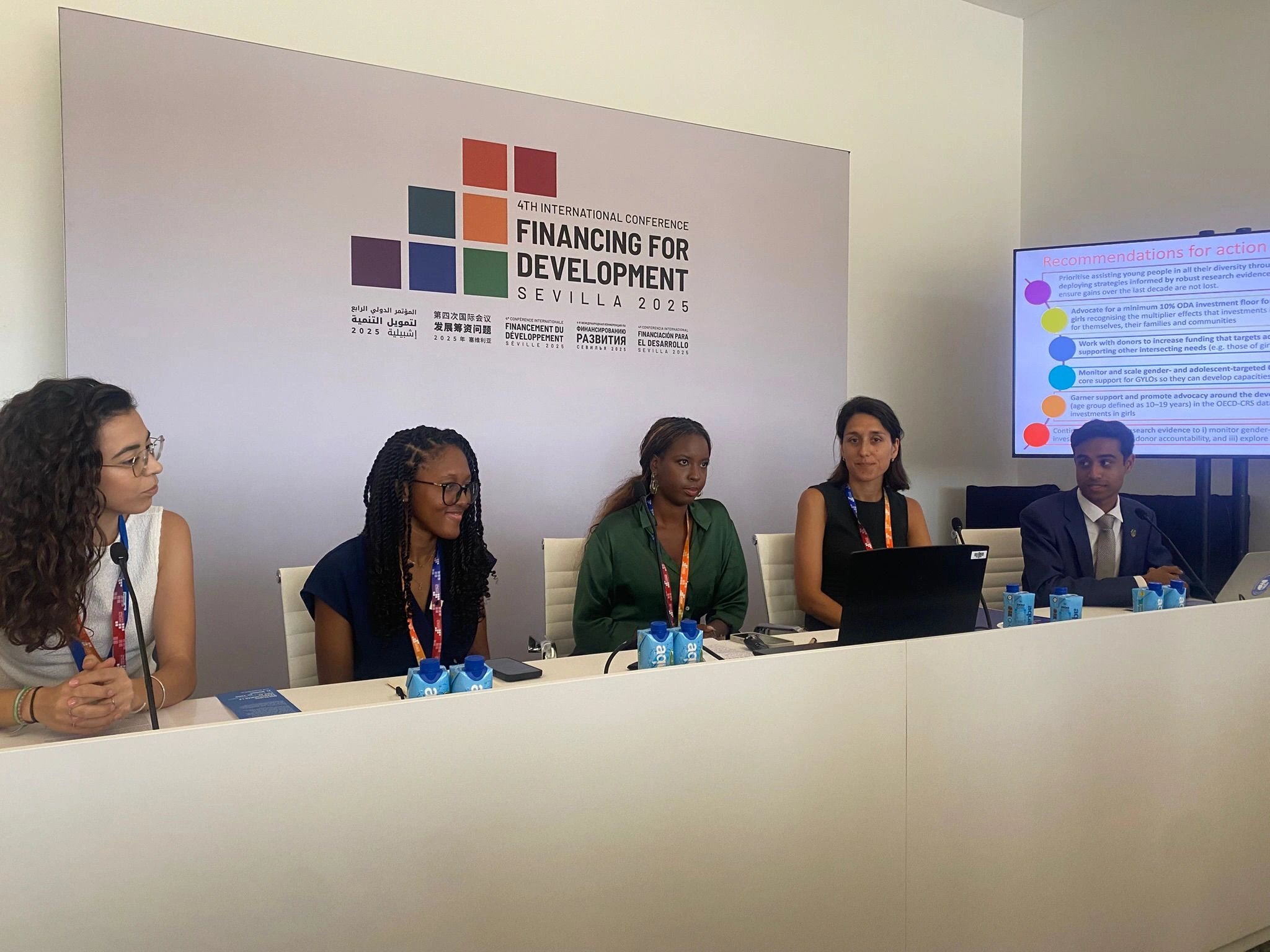UNFFD: what are the implications of the new financing landscape for adolescent girls?
06.07.2025
Author: Kate Pincock
As practitioners, activists, researchers and policy-makers review the Platform for Action launched during the 4th International Conference on Financing for Development (UNFFD) in Sevilla, reactions to the overhaul that it represents are deeply divided. In one world, bankers and private financial actors – many of whom were present at the parallel International Business Forum - are applauding the new and ambitious forms of financing set out in the Outcomes Document that was agreed ahead of the conference. In another world, civil society organisations are raising alarm bells about the impact of ODA cuts on the most vulnerable, and how the further privatisation of development financing may impact agendas to promote human rights and sustainable development. Indeed, at the FIBES centre in Sevilla, these worlds rarely collided, with spaces and events for civil society, private finance and governments feeling markedly separate.
The Sevilla Commitment and Platform for Action represents a consensus that the world of development financing is irrevocably changing, and that new innovative modalities will be essential to sustaining progress on addressing global poverty and inequality. While it has been no mean feat to garner backing for the Commitment across member states, the process itself was fraught with disagreements, notably regarding the changing role of ODA. It is also, therefore, important to acknowledge the compromises that it signifies - and the implications of the new financing for the development landscape for funding targeted at adolescent girls.
Side events organised by civil society actors working in children’s rights and feminist organising drew attention to the need to protect ODA spending on support for key services such as education and sexual and reproductive healthcare, which are integral to empowering girls now and in the future. This reflects a widespread consensus that investing in girls generates multiplier effects across communities and generations.
At the same time, new GAGE research indicates the volatility of the donor landscape and the anticipated impact of cuts on the amount of gender- and adolescent-targeted ODA that will be available to sustain work in these areas in the near future. The bilateral donors, which previously represented the largest contributors to gender equality-focused ODA, cannot be relied upon to automatically continue prioritising girls and women in their funding decision-making. Indeed, given the de-prioritisation of investments in adolescents over recent years, particularly since the COVID-19 pandemic, mitigating against the effects on girls of declining levels of ODA must be a central concern. The most marginalised adolescents, such as young people with disabilities, who are already neglected within existing ODA streams, will be even harder hit without proactive efforts to protect and indeed strengthen age- and gender targeted funding. GAGE research indicates that not only were investments in adolescent girls already insufficient prior to 2024, especially given the ripple effects of empowering girls - but these resources will undeniably be stretched further.
Underpinning many of the conversations about what happens next was the recognition of this changing landscape, and the need, therefore, for NGOs to improve their own efforts to engage with private financing actors and emphasise the economic benefits of promoting girls’ education, health, and financial inclusion. Indeed, GAGE’s call for a minimum floor for bilateral donors of 10% of ODA to be gender and adolescent-targeted reflects widespread recognition of the multiplier effects of investing in girls. What is also important is that we do not lose sight of rights and justice, especially given the emphasis of Agenda 2030 to ‘leave no one behind’. Some groups of girls will not be perceived as profitable or productive - that does not mean that they should be excluded from funding. In fact, it underlines the vital need for strong states that operate robust, inclusive social protection systems, and comprehensive education and healthcare that reach all girls.
Side events with civil society in Sevilla emphasised the connections between development financing and gender equality, underlining the importance of holding states to account on the commitments that they have already made, including at CSW69, to resourcing adolescent girls. Committing a minimum of 10% of ODA to address these needs would enhance our ability to make progress to ensuring that girls’ rights and well-being, as well as their future economic potential, remain part of the conversation about development financing. A 10% minimum floor would also support targeted funding for the most marginalised adolescents, such as young people with disabilities and young women married as children. In the new financing landscape, ‘leaving no one behind’ must continue to guide ODA principles – and that means prioritising adolescent girls on the basis of both economic and human rights principles.
Details
Audience type
Policy maker or donor
